The Capetian dynasty, also known as the "House of France", is a dynasty of European origin, and a branch of the Robertians and the Karlings. It is among the largest and oldest royal houses in Europe and the world, and consists of Hugh Capet, the founder of the dynasty, and his male-line descendants, who ruled in France without interruption from 987 to 1792, and again from 1814 to 1848. The senior line ruled in France as the House of Capet from the election of Hugh Capet in 987 until the death of Charles IV in 1328. That line was succeeded by cadet branches, the Houses of Valois and then Bourbon, which ruled without interruption until the French Revolution abolished the monarchy in 1792. The Bourbons were restored in 1814 in the aftermath of Napoleon's defeat, but had to vacate the throne again in 1830 in favour of the last Capetian monarch of France, Louis Philippe I, who belonged to the House of Orléans. Cadet branches of the Capetian House of Bourbon are still reigning over Spain and Luxembourg.

Hugh Capet was the King of the Franks from 987 to 996. He is the founder of and first king from the House of Capet. The son of the powerful duke Hugh the Great and his wife Hedwige of Saxony, he was elected as the successor of the last Carolingian king, Louis V. Hugh was descended from Charlemagne's son Pepin of Italy through his mother and paternal grandmother, respectively, and was also a nephew of Otto the Great.
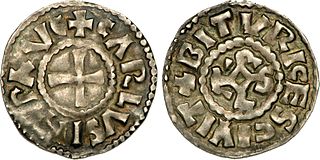
Charles III, called the Simple or the Straightforward, was the king of West Francia from 898 until 922 and the king of Lotharingia from 911 until 919–923. He was a member of the Carolingian dynasty.

Robert II, called the Pious or the Wise, was King of the Franks from 996 to 1031, the second from the Capetian dynasty. Crowned Junior King in 987, he assisted his father on military matters. His solid education, provided by Gerbert of Aurillac in Reims, allowed him to deal with religious questions of which he quickly became the guarantor. Continuing the political work of his father, after becoming sole ruler in 996, he managed to maintain the alliance with the Duchy of Normandy and the County of Anjou and thus was able to contain the ambitions of Count Odo II of Blois.

Odo was the elected King of West Francia from 888 to 898. He was the first king from the Robertian dynasty, the parent house of the House of Capet. Before assuming the kingship, Odo was the count of Paris. His reign marked the definitive separation of West Francia from the Carolingian Empire, which would never be reunited.

Robert I was the elected King of West Francia from 922 to 923. Before his election to the throne he was Count of Poitiers, Count of Paris and Marquis of Neustria and Orléans. He succeeded the overthrown Carolingian king Charles the Simple, who in 898 had succeeded Robert's brother, king Odo.
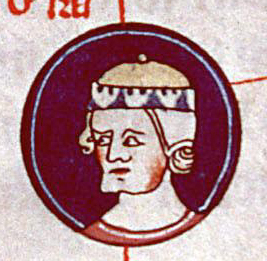
Hugh the Great was the duke of the Franks and count of Paris. He was the most powerful magnate in France.
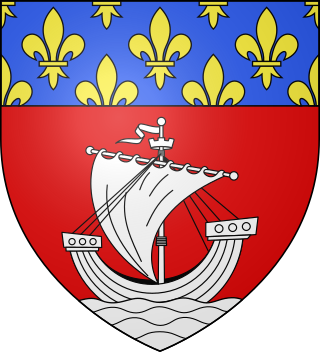
Count of Paris was a title for the local magnate of the district around Paris in Carolingian times. After Hugh Capet was elected King of France in 987, the title merged into the crown and fell into disuse. However, it was later revived by the Orléanist pretenders to the French throne in an attempt to evoke the legacy of Capet and his dynasty.

Robert the Strong was the father of two kings of West Francia: Odo and Robert I of France. His family is named after him and called the Robertians. In 853, he was named missus dominicus by Charles the Bald, King of West Francia. Robert the Strong was the great-grandfather of Hugh Capet and thus the ancestor of all the Capetians.

Hedwige of Saxony, a member of the Ottonian dynasty, was Duchess consort of the Franks by her marriage to the Robertian duke Hugh the Great. Upon her husband's death in 956, she acted as a regent during the minority of their son Hugh Capet, the founder of the Elder House of Capet.

Louis V, also known as Louis the Do-Nothing, was a king of West Francia from 979 to his early death in 987. During his reign, the nobility essentially ruled the country. Dying childless, Louis V was the last Carolingian monarch in West Francia.

Lothair, sometimes called Lothair II, III or IV, was the penultimate Carolingian king of West Francia, reigning from 10 September 954 until his death in 986.

Adbelahide, Adele, Adela or Adelaide of Aquitaine, was Queen of France by marriage to Hugh Capet, King of the Franks. Adelaide and Hugh were the founders of the Capetian dynasty of France, which would rule France until the 18th and 19th centuries. As queen consort, Adelaide had some extent of influence over her husband's governance of France. Adelaide is typically only briefly mentioned in connection to her husband, Hugh, and her son Robert II.
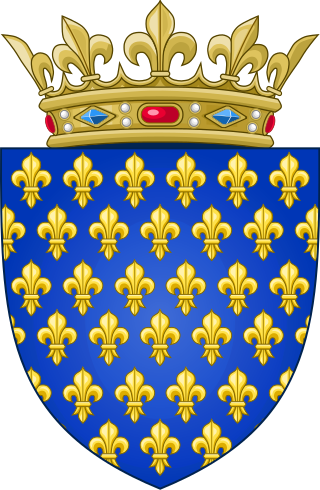
The House of Capet ruled the Kingdom of France from 987 to 1328. It was the most senior line of the Capetian dynasty – itself a derivative dynasty from the Robertians.

Odo I, Count of Blois, Chartres, Reims, Châteaudun and Omois, lord of Provins, was the son of Theobald I of Blois and Luitgard, daughter of Herbert II of Vermandois. He received the title of count palatine from King Lothair of West Francia.
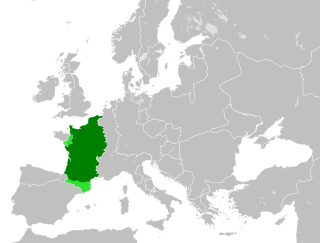
In medieval historiography, West Francia or the Kingdom of the West Franks constitutes the initial stage of the Kingdom of France and extends from the year 843, from the Treaty of Verdun, to 987, the beginning of the Capetian dynasty. It was created from the division of the Carolingian Empire following the death of Louis the Pious, with its neighbor East Francia eventually evolving into the Kingdom of Germany.

Emma of France was a Frankish queen. The daughter of Robert I of France, she was a descendant of the powerful aristocratic Robertian family; her younger half-brother was Hugh the Great, the duke of the Franks and count of Paris.
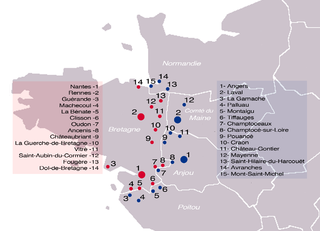
The Marches of Neustria were two marches created in 861 by the Carolingian king of West Francia Charles the Bald. They were ruled by officials appointed by the Monarchy of France, known as wardens, prefects or margraves. One march was created as a buffer against the Bretons and the other against the Norsemen.
Robert III (800–834), also called Rutpert, was the Count of Worms and Rheingau of a noble Frankish family called the Robertians. It has been proposed that he was the son of Robert of Hesbaye.
Adelaide (Aelis) of Tours was a daughter of Count Hugh of Tours and his wife Ava, who was a sister of Matfrid, Count of Orléans.
















